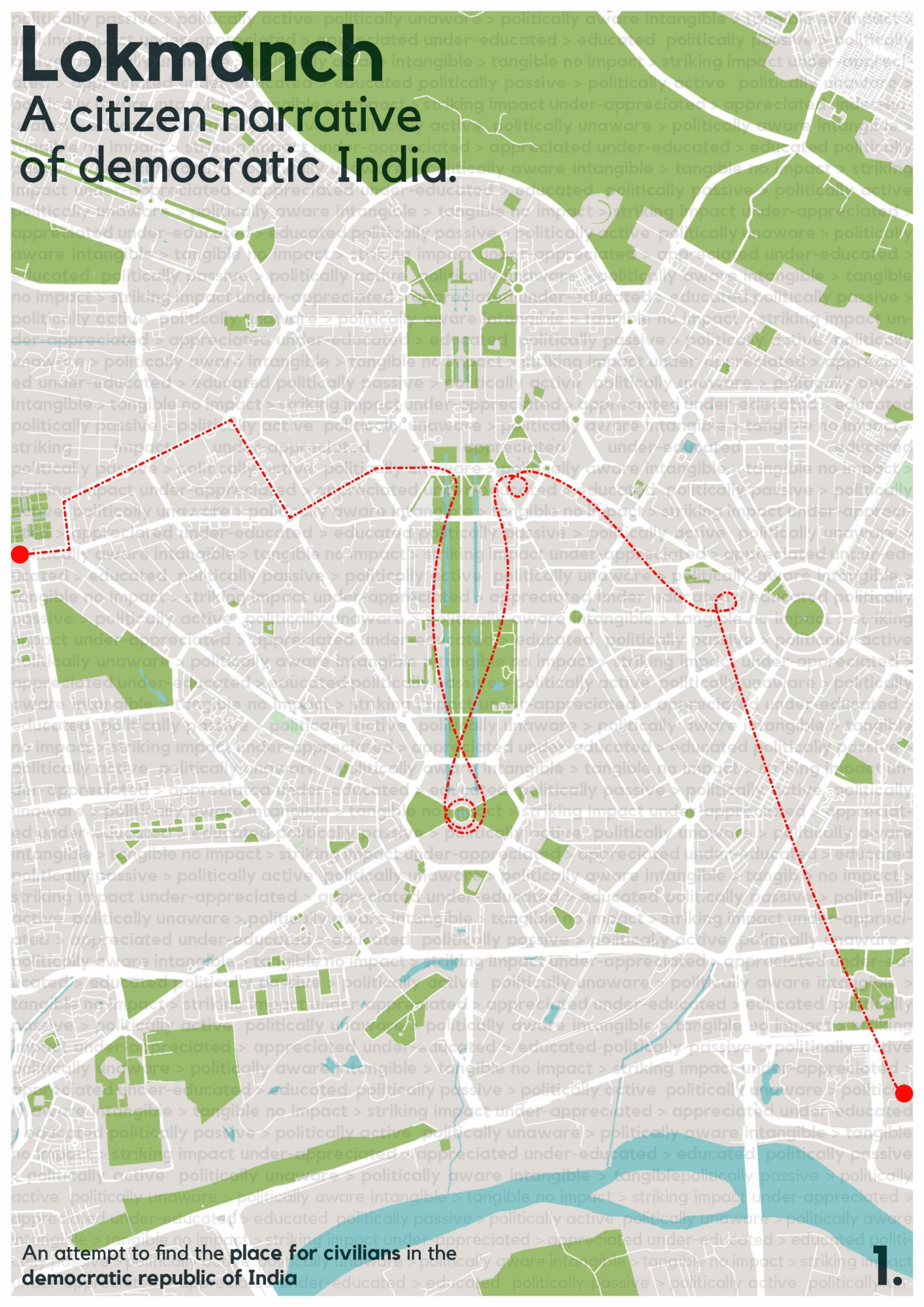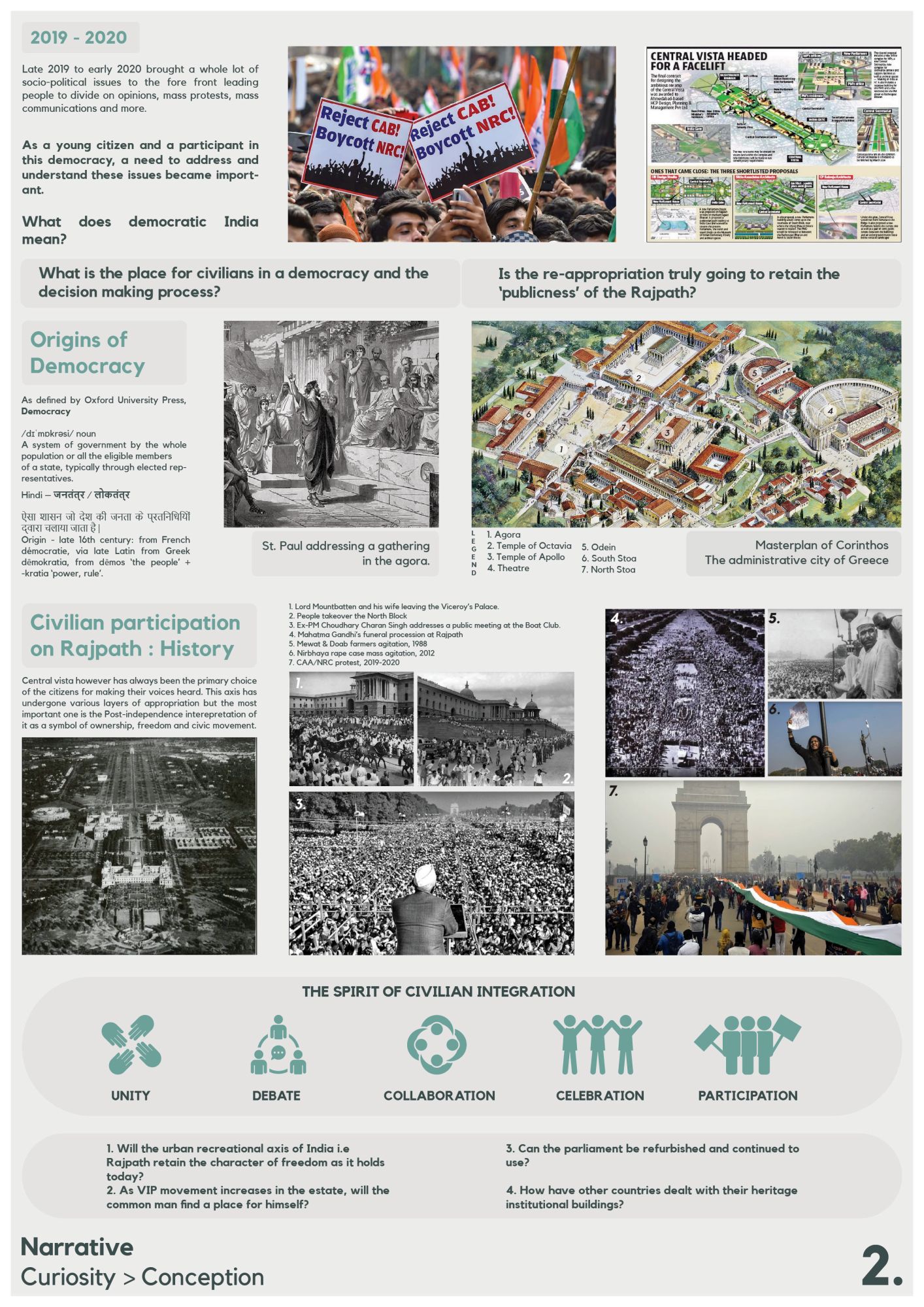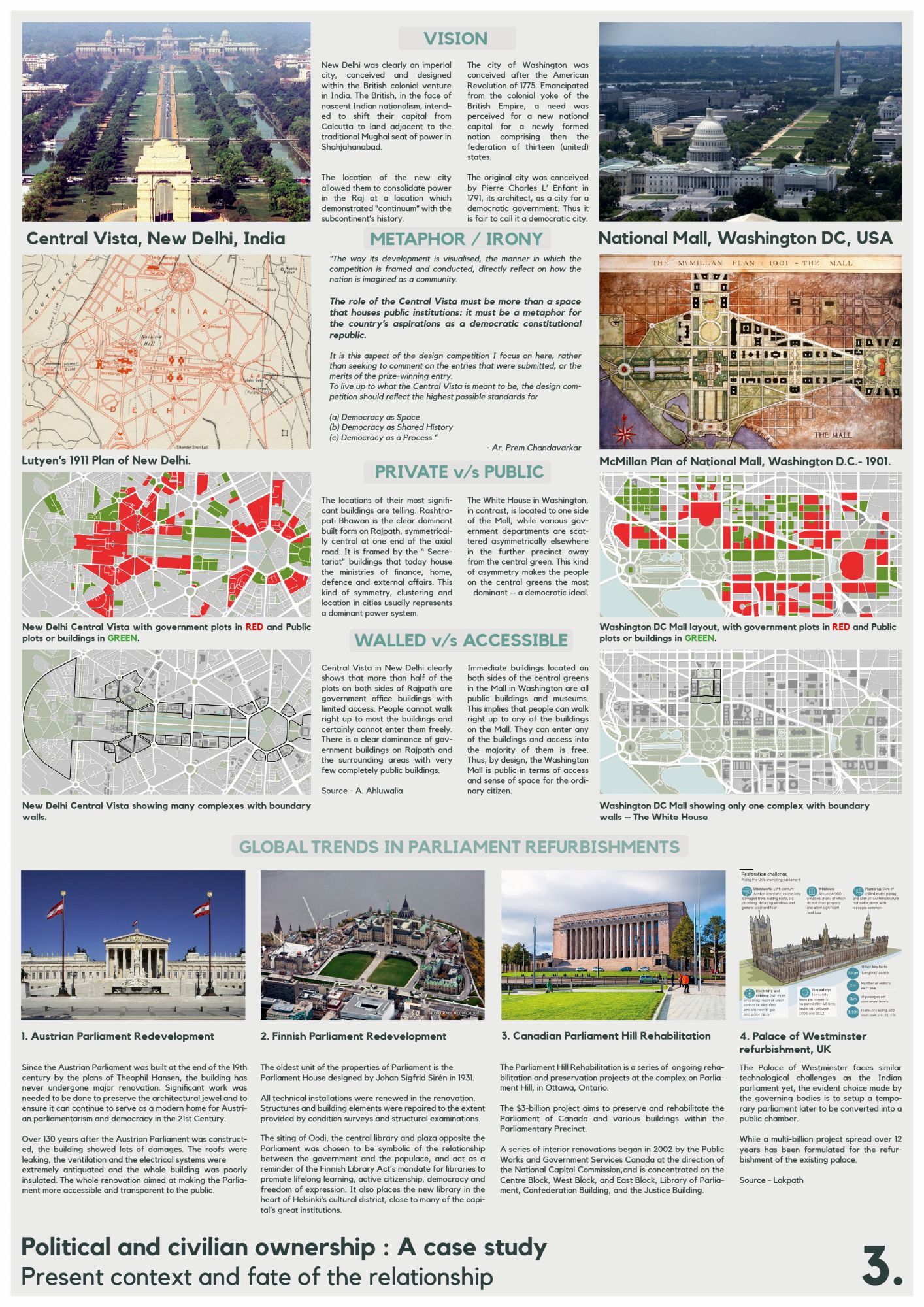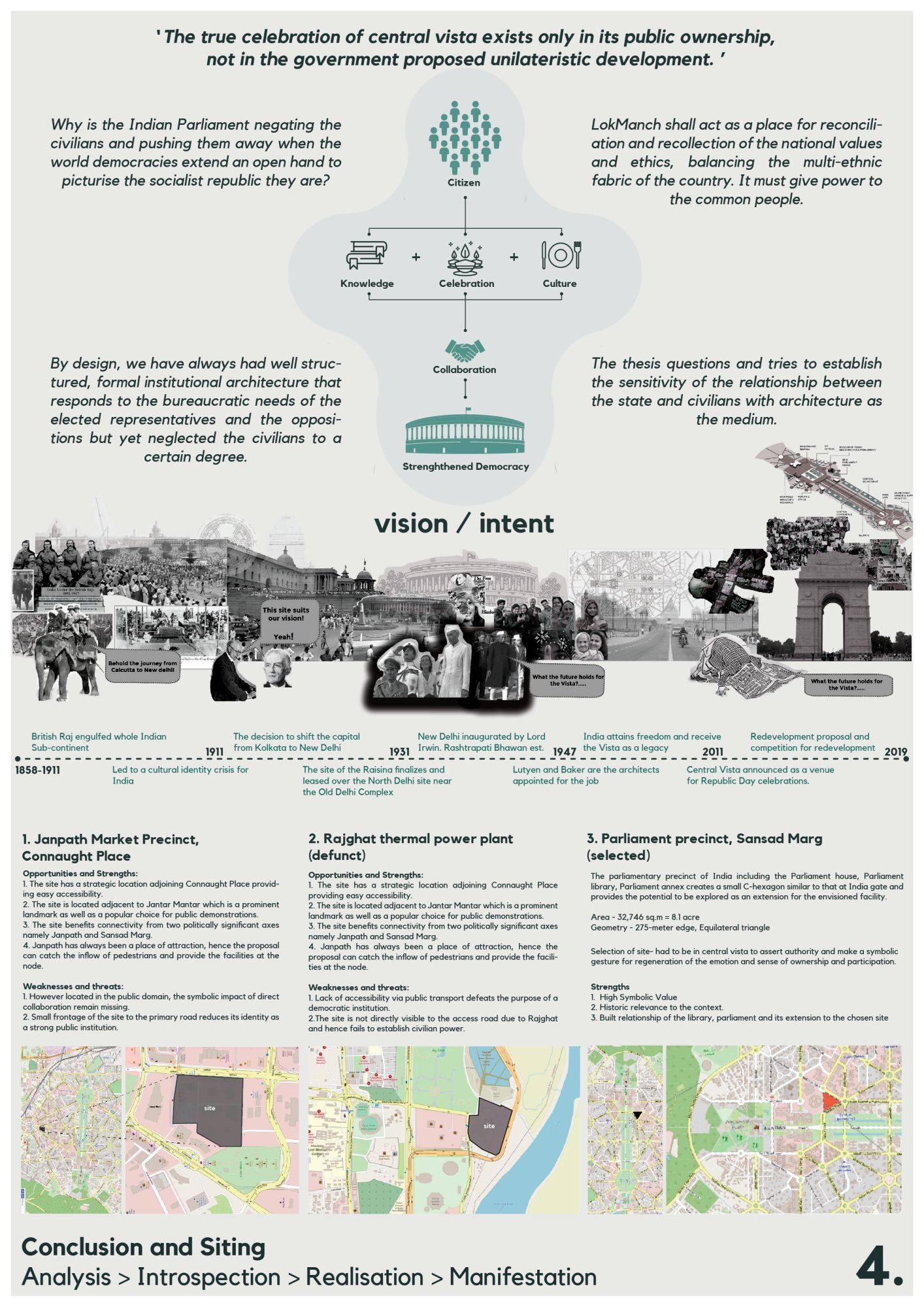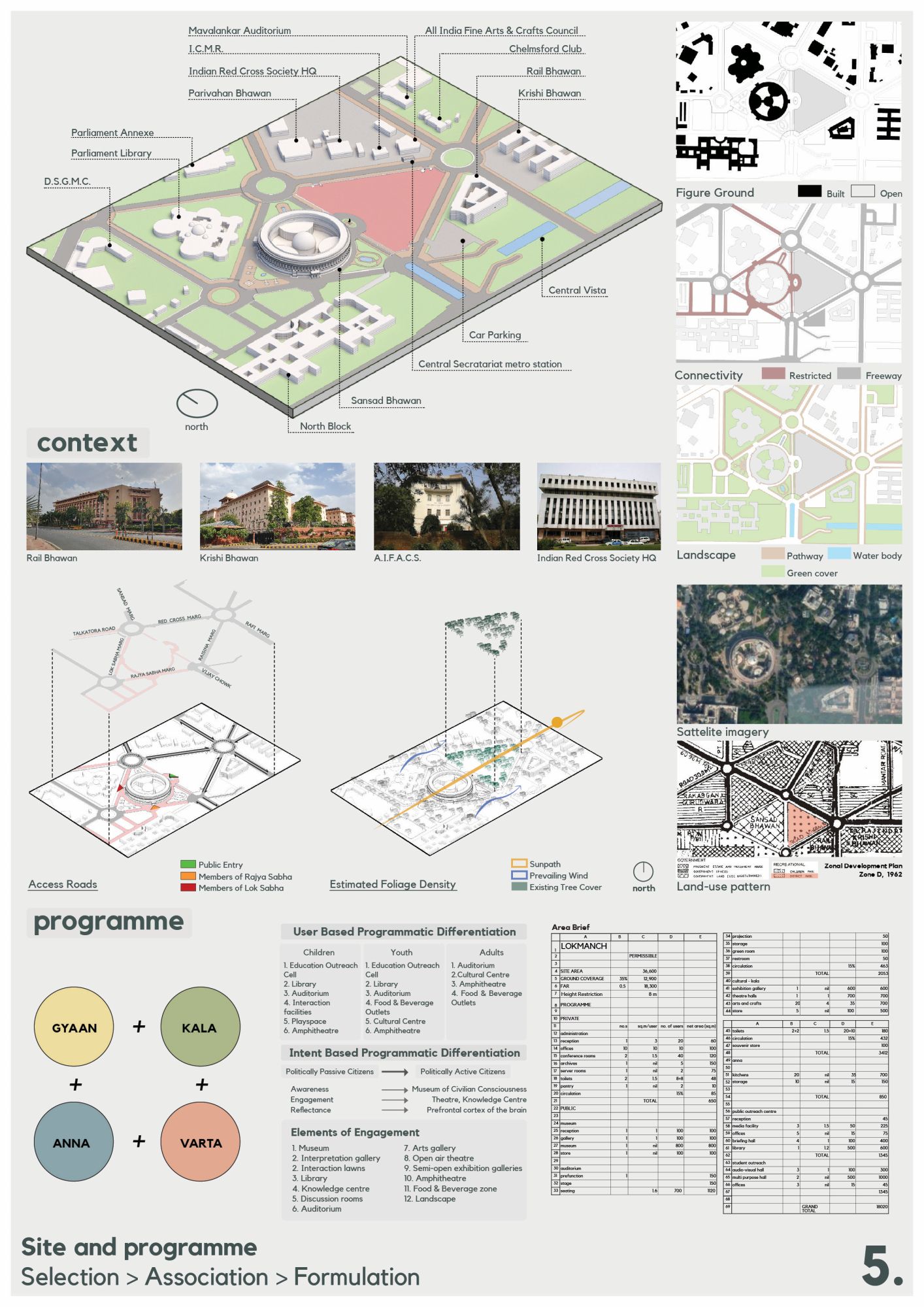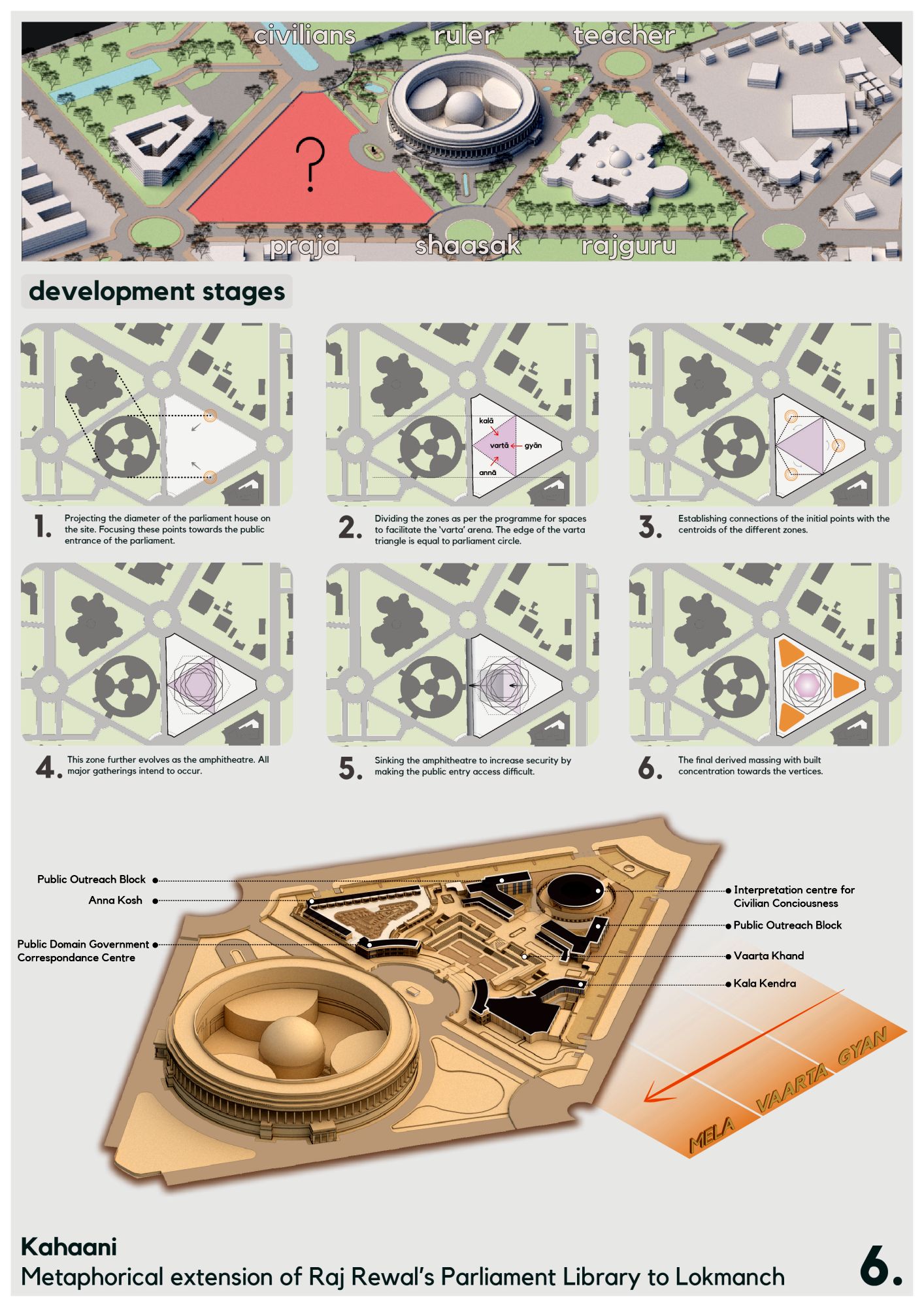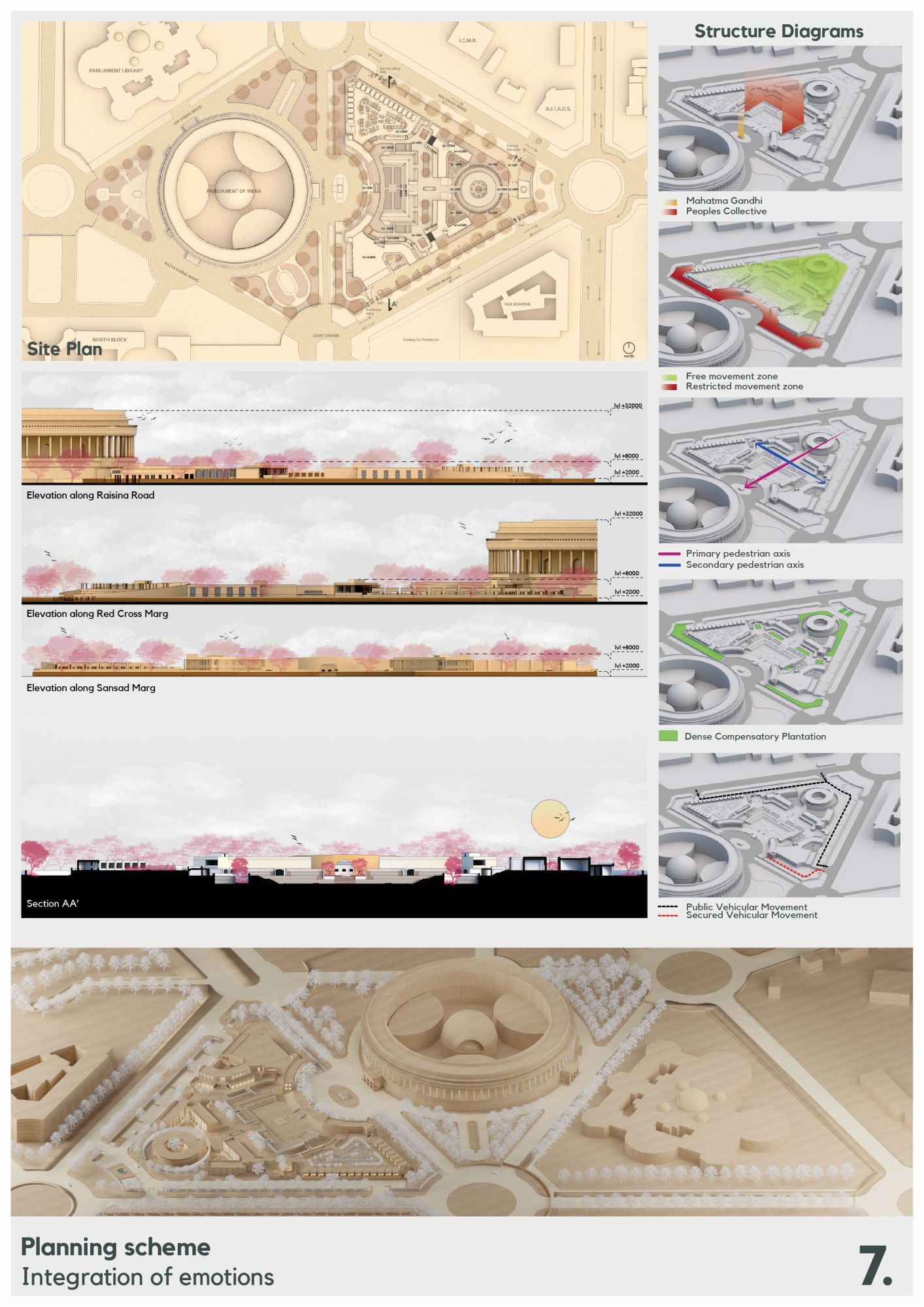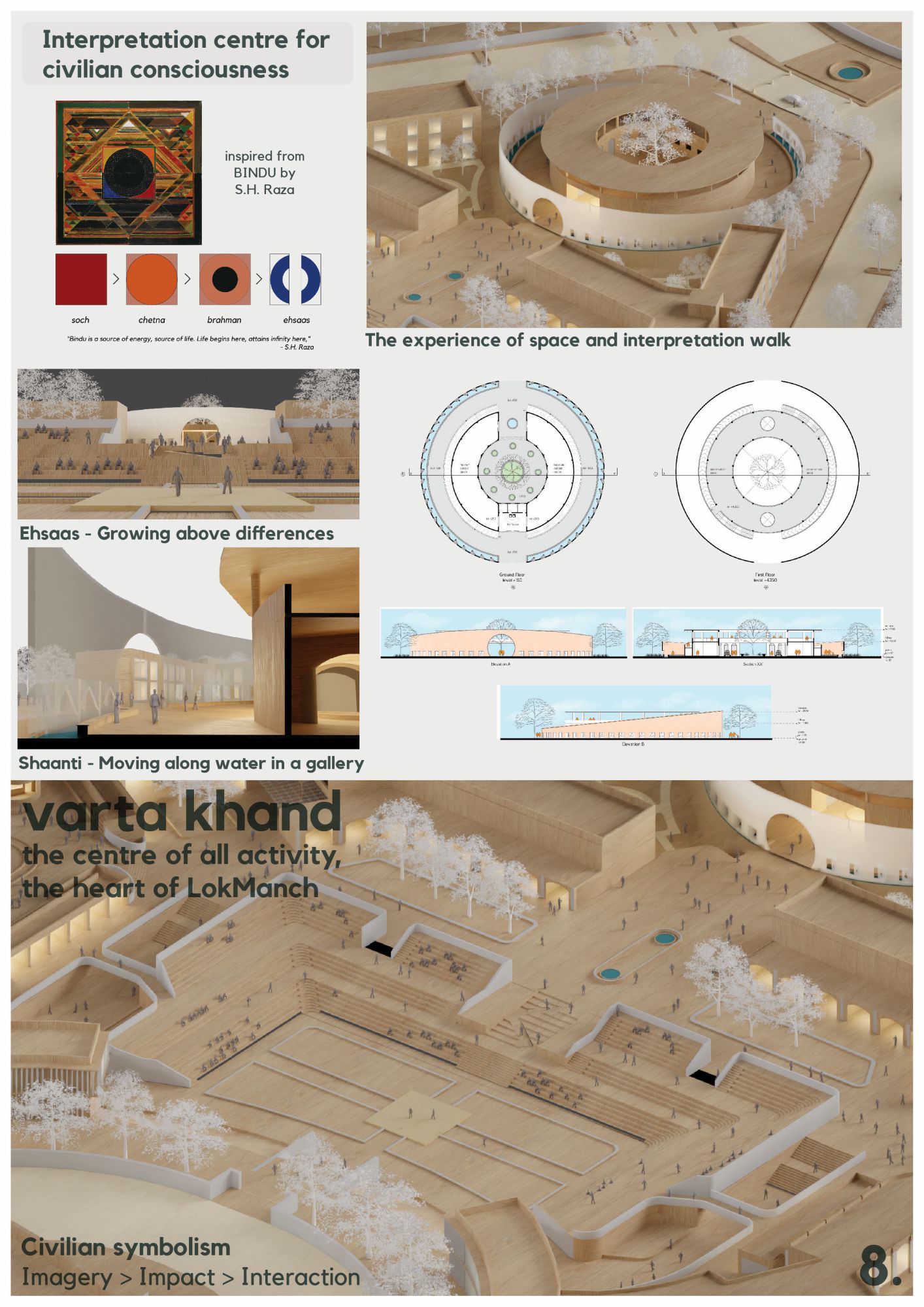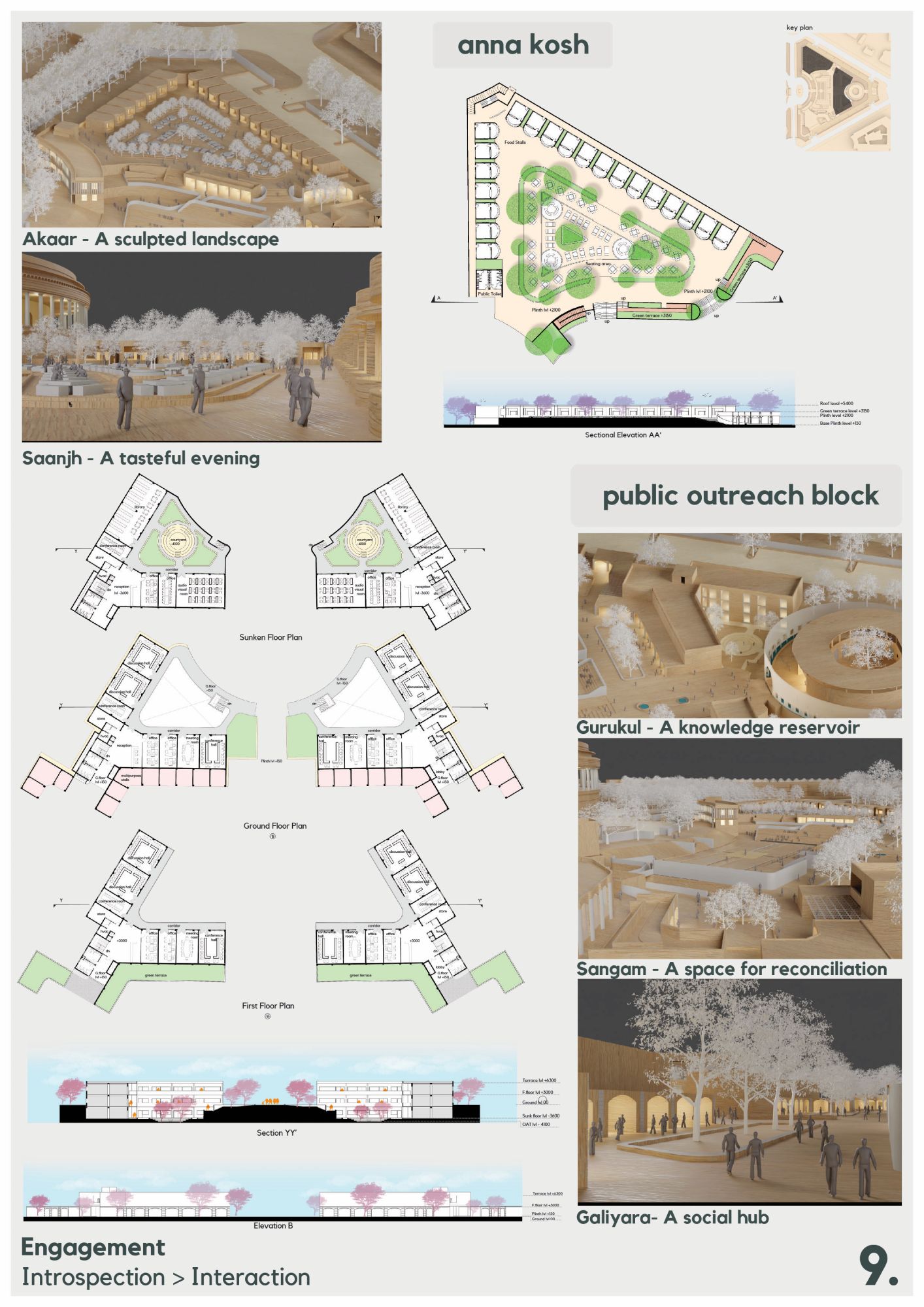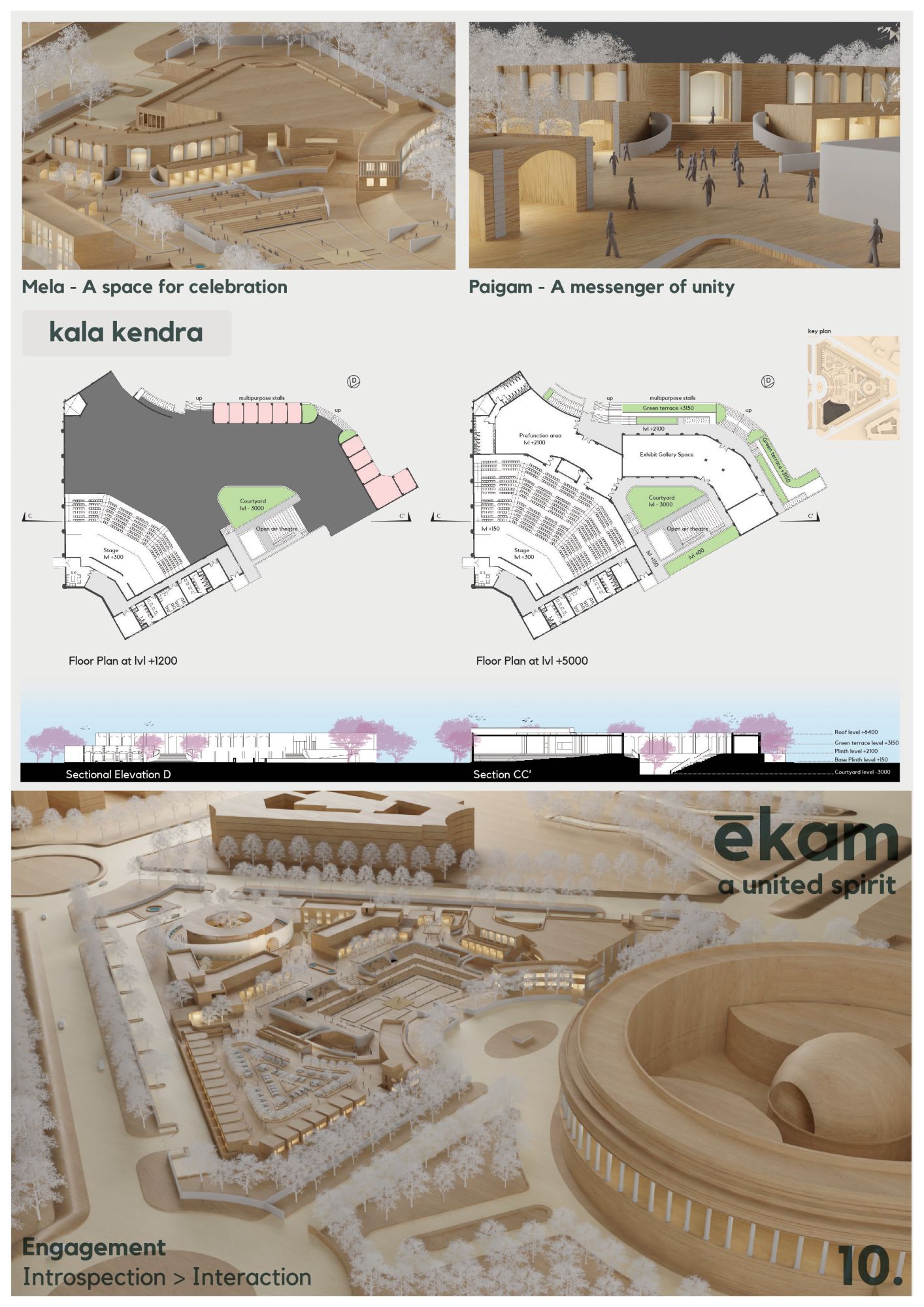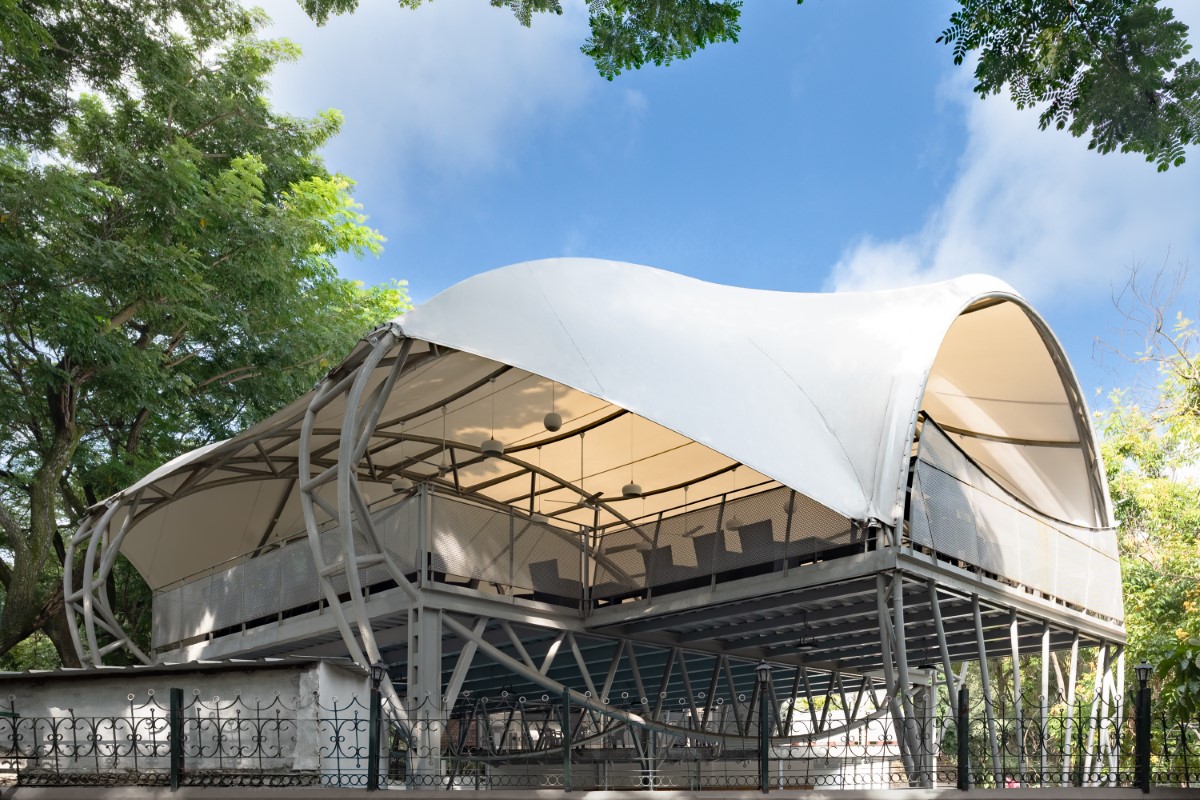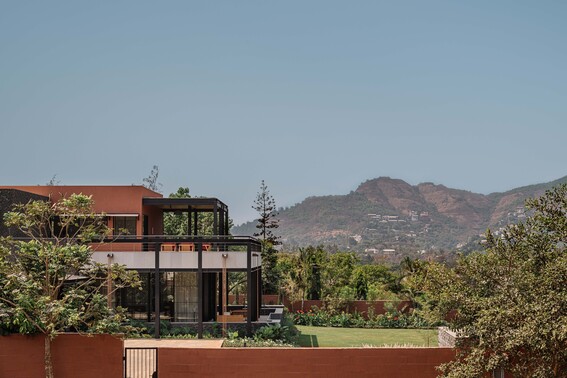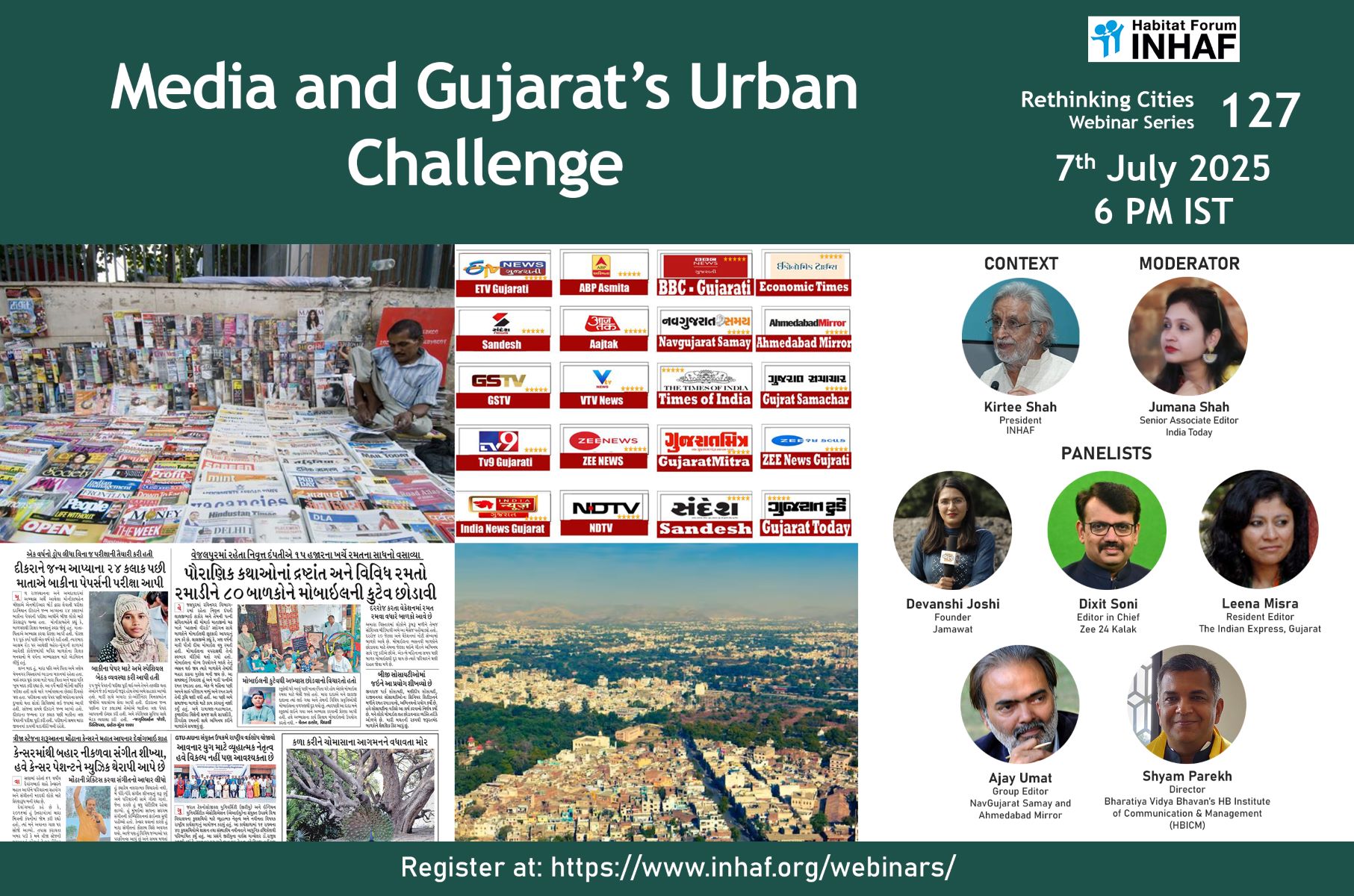Architecture thesis year: 2020
India is one of the largest democracies in the world and we are almost hitting the diamond jubilee mark of our independence. The way democracy was understood by the people has evolved; the images have cleared in the mind of the civilians. Education has a major role in this mass shift in the perception and interpretation of democracy. Yet, almost no democratic country enables civilians to give a formal platform to raise their voices, to collect and discuss. To celebrate and criticize the happenings in the country.
From major breakthroughs to the bleakest of events, in a democratic setup where the elected representatives are answerable to the civilians, there must be an institution that convenes between the two parties and establishes & moderates their roles.
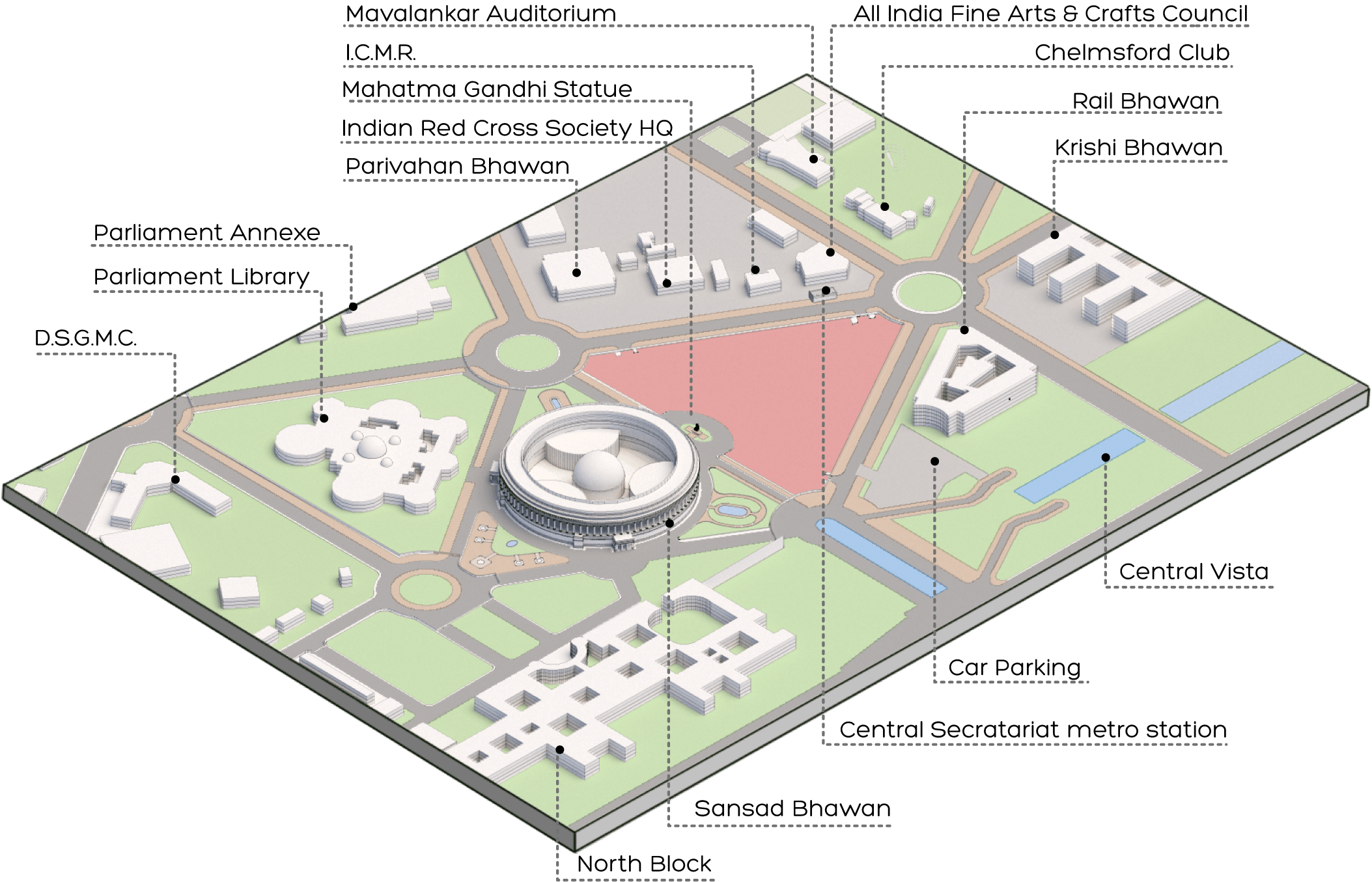
The subject matter discussed above emerged out of the recent CAA/NRC protest that broke out in the capital in late 2019. The mass movement leads to many causalities, vandalism and most, fear of being unheard and unanswered amongst the masses. It is however beyond the scope to answer for right and wrong, one may still postulate that a platform for consensus and discussion can always mediate the happenings in the state. The role of media however important cannot be adjudged truly transparent as the past dictates. Hence it becomes important that the decision-makers and citizens come together one to one and talk about the matters of the state. To celebrate and criticize the happenings in the country. From major breakthroughs to the bleakest of events, in a democratic setup where the elected representatives are answerable to the civilians, there must be an institution that convenes between the two parties and establishes & moderates their roles. Such a space must also act as a place for reconciliation and recollection of the national values and ethics, balancing the multi-ethnic fabric of the country. It must give power to the common people. By design, we have always had a well-structured, formal institutional architecture that responds to the bureaucratic needs of the elected representatives and the opposition but yet neglected the civilians to a certain degree.
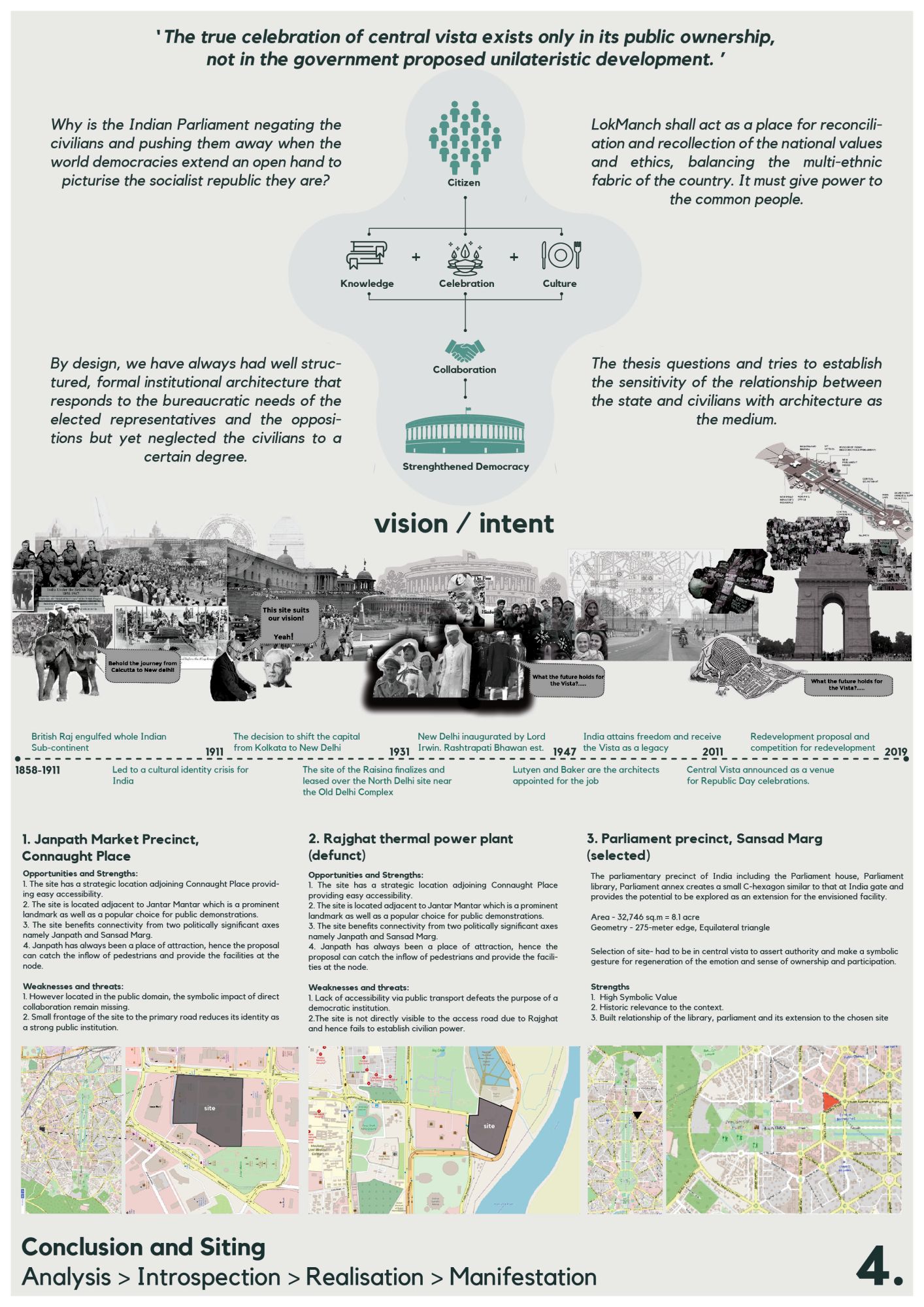
The thesis questions and tries to establish the sensitivity of the relationship between the state and civilians with architecture as the medium.
An attempt to envision a contemporary institution within the rich contextual and cultural heritage of India that focuses on the idea of democracy. To create a civic amenity that provides a platform to enhance dialogue across politics, cultures, religions, regions, societies, economies and history. A facility to attract children and adults likewise to impart knowledge about the idea of democracy in India.
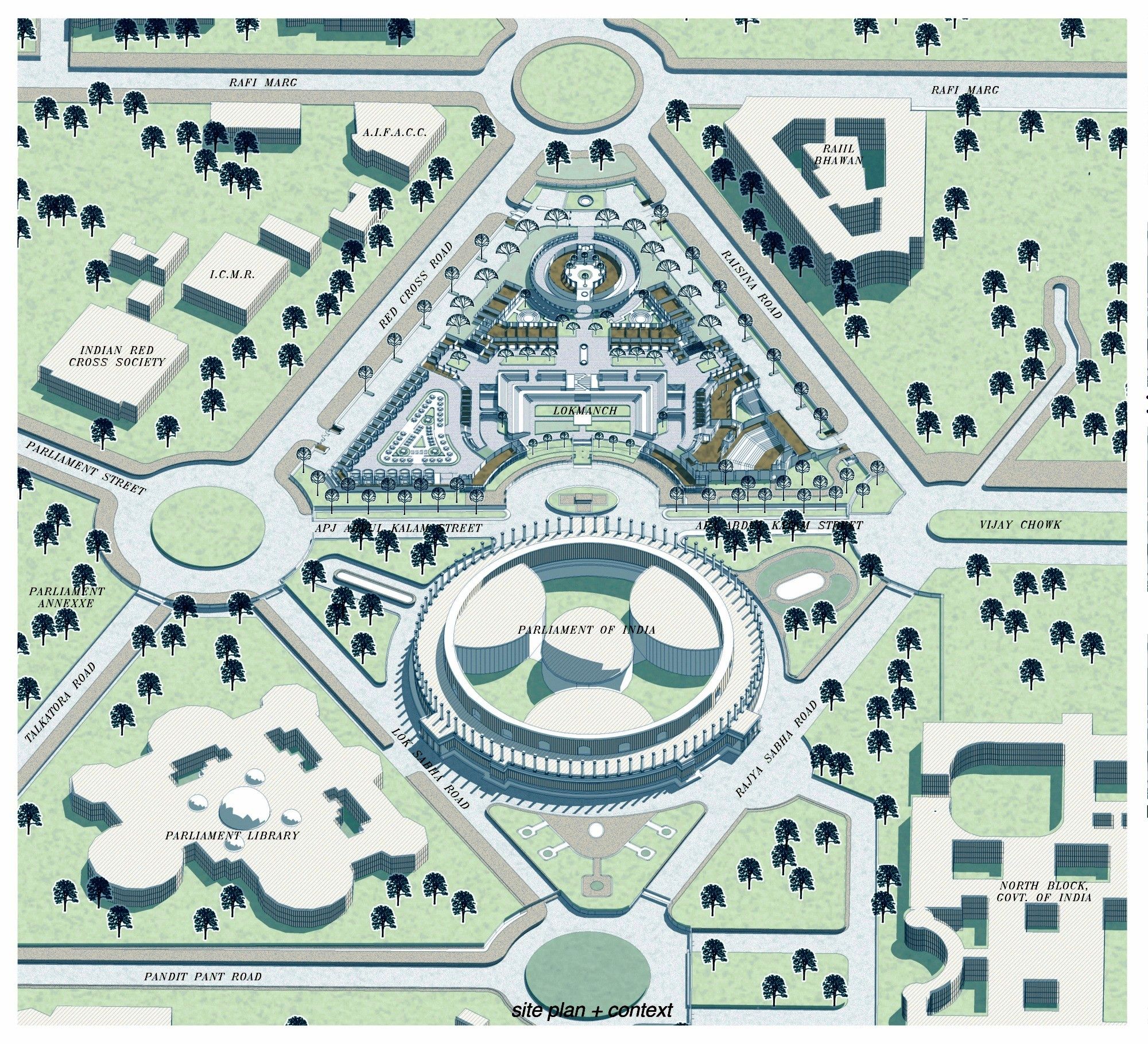
Such space must also act as a place for reconciliation and recollection of the national values and ethics, balancing the multi-ethnic fabric of the country. It must give power to the common people. By design, we have always had a well-structured, formal institutional architecture that responds to the bureaucratic needs of the elected representatives and the opposition but yet neglected the civilians to a certain degree. Evaluating the mass protests and demonstrations happening all over the nation today, as historians and experts quote, it is the biggest and most historical movement happening in post-independent India. This raises the question that could have there been a possibility of discussion. A certain degree of mutual consensus by interacting and involving the public in matters of national concern. The thesis questions and tries to establish the sensitivity of the relationship between the state and civilians with architecture as the medium. An attempt to envision a contemporary institution within the rich contextual and cultural heritage of India that focuses on the idea of democracy.
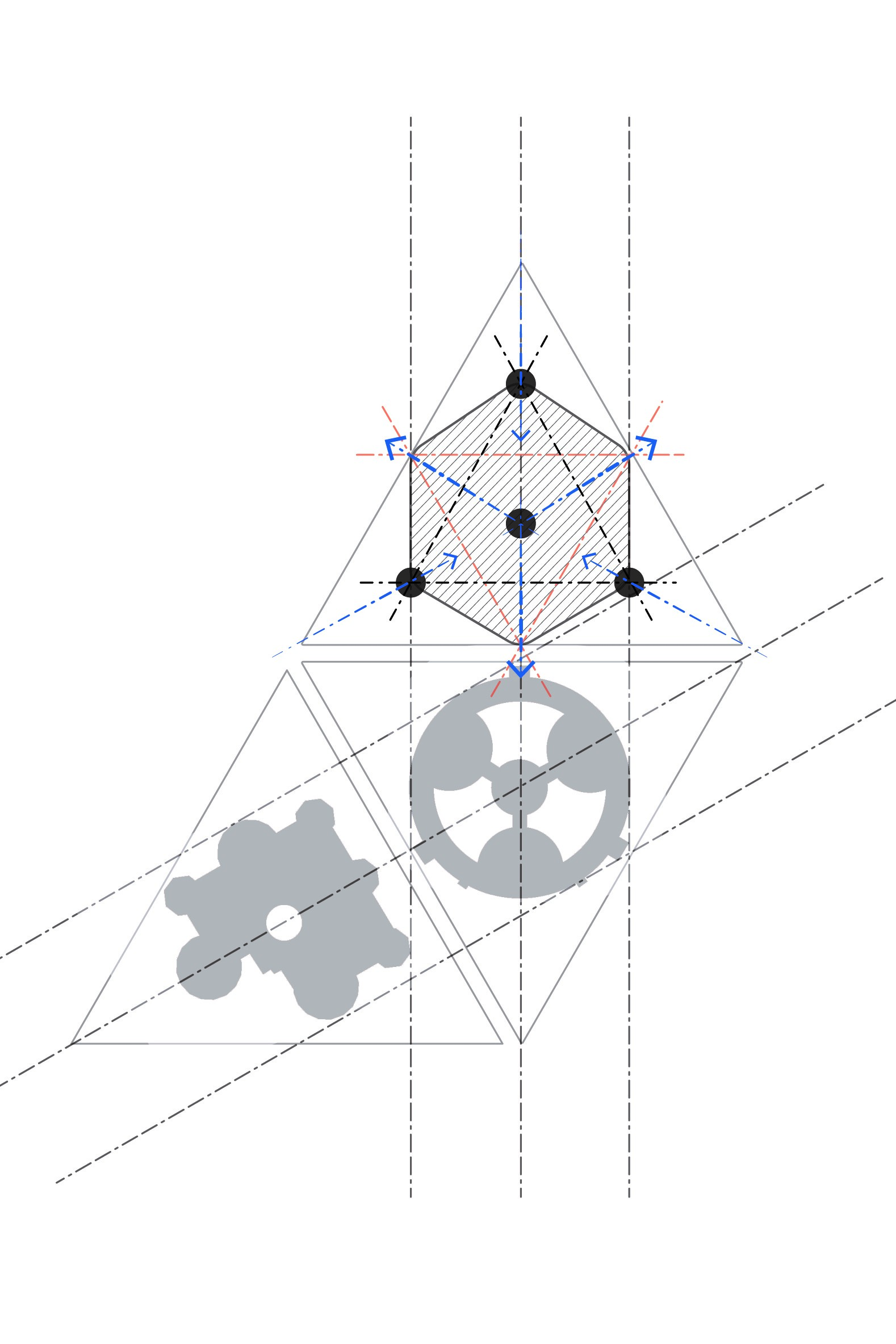
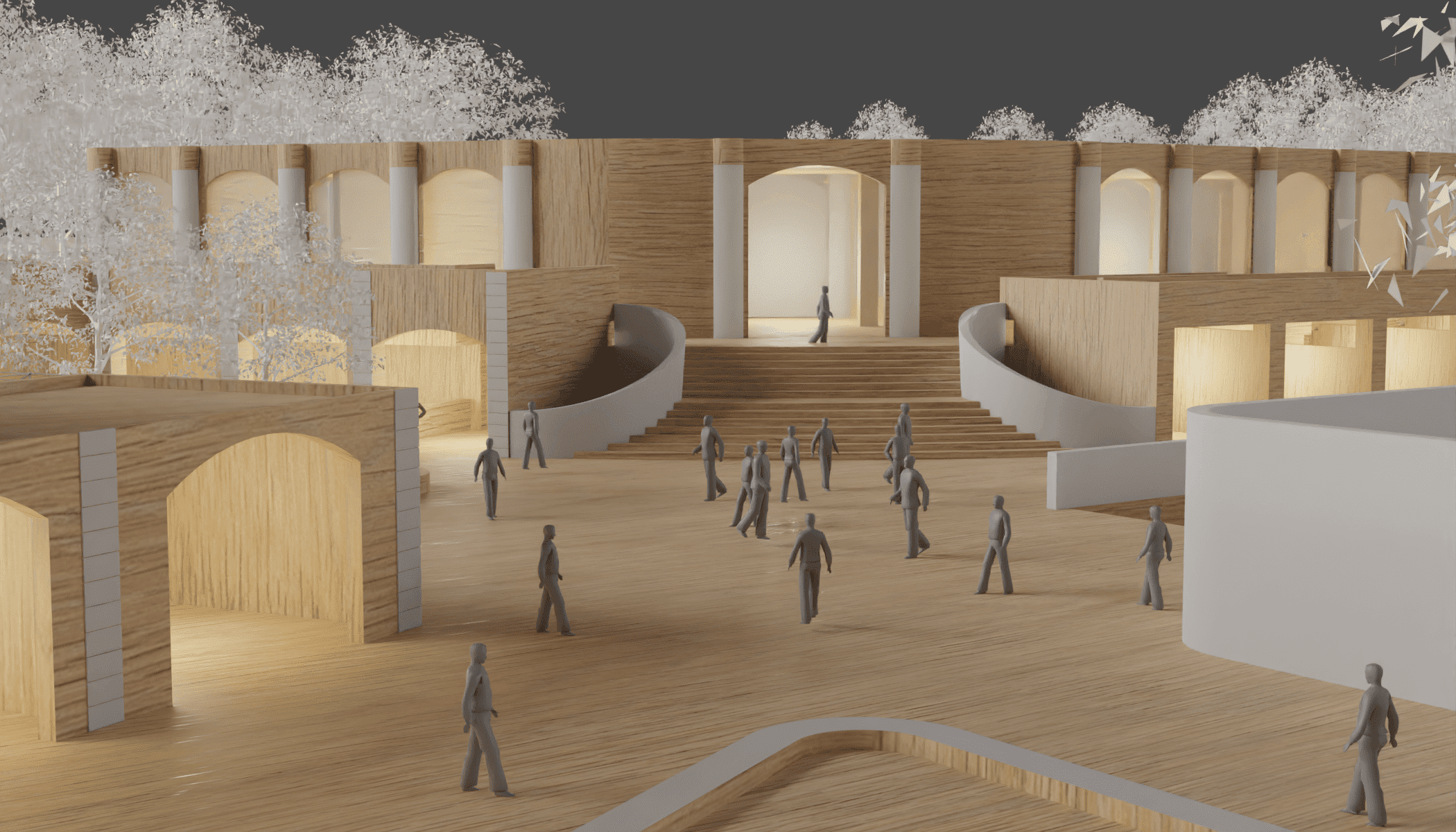
LokManch shall act as a place for reconciliation and recollection of the national values and ethics, balancing the multi-ethnic fabric of the country. It must give power to the common people. A government-funded infrastructure aiming to strengthen ties between the civic administration by educating and engaging the citizens in activities and events that promote political activeness and makes the opportunity for the regeneration of the national spirit of India.
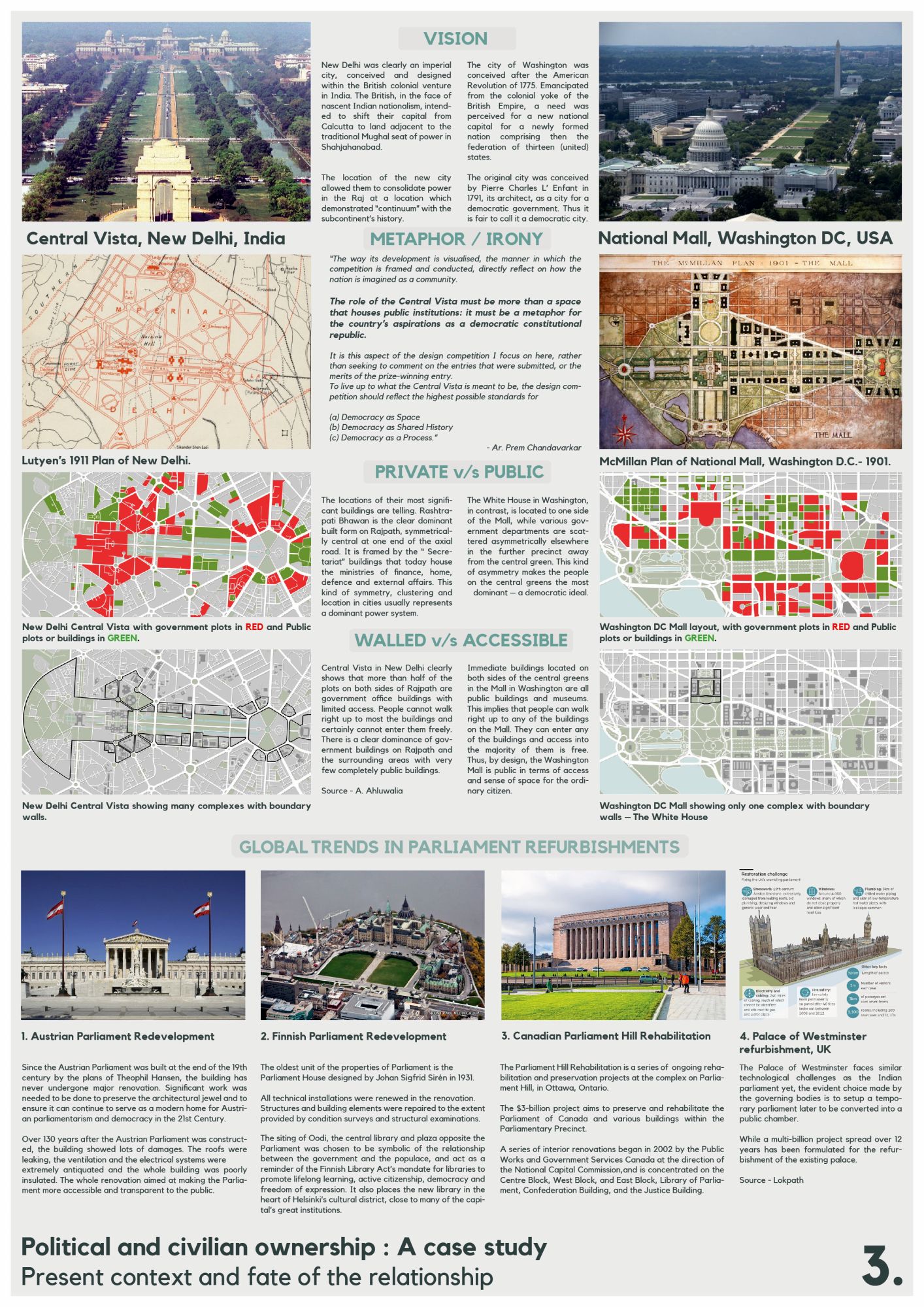
The parliaments across the globe as mentioned earlier, prioritizes the public and strives to provide a free platform for people to gather around to celebrate and dissent in unison. Across all the parliaments mentioned, spaces like libraries, amphitheatres, auditoriums, and education outreach facilities are primary ordeals to connect the state with the citizens. Hence this raises the question, why is the Indian Parliament negating the civilians and pushing them away when the world democracies extend an open hand to picture the socialist republic they are?
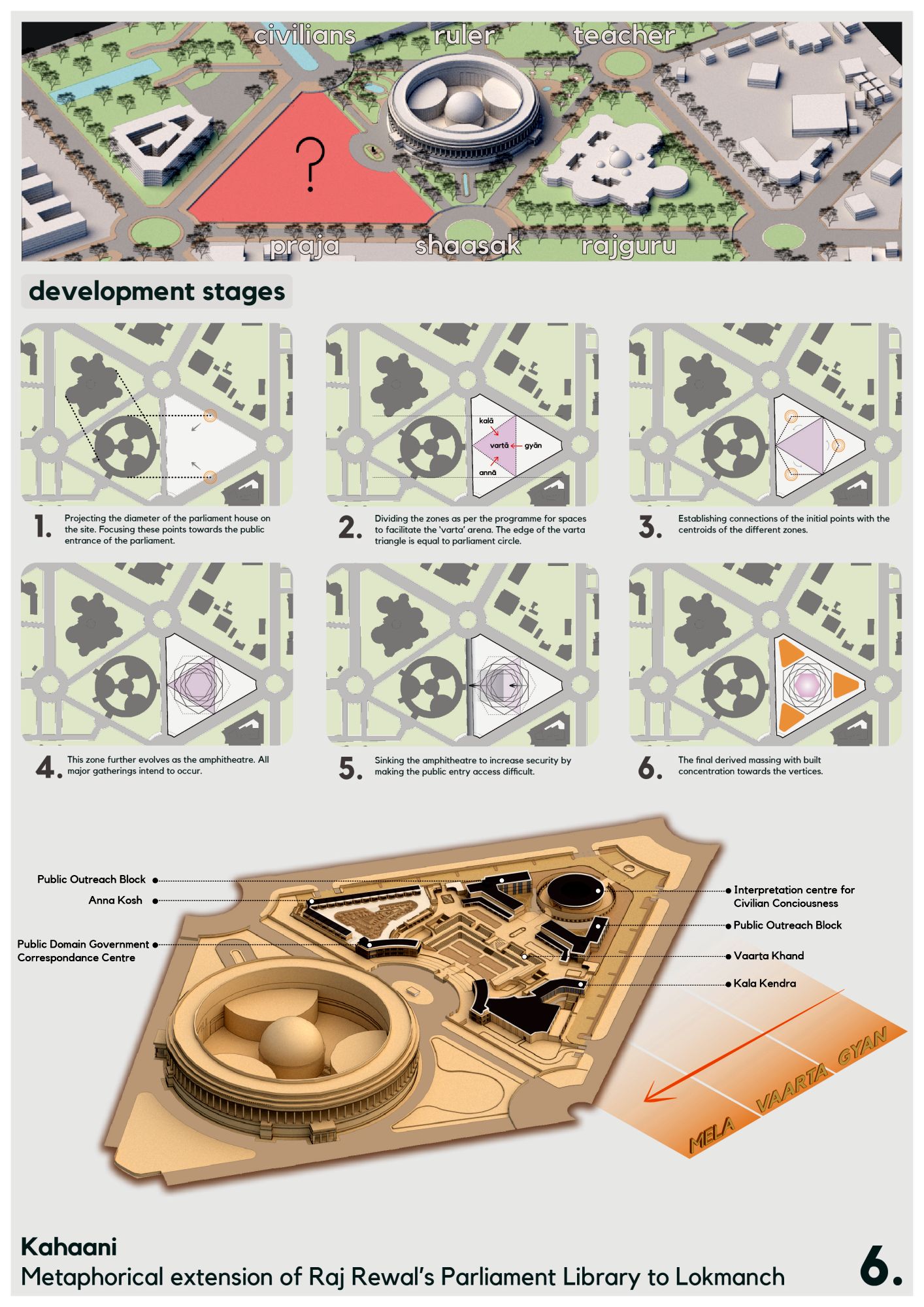
The site chosen for the project lies in the heart of our national political centre, the Rajpath. The parliament precinct of India is perhaps the best location to site a monumental space that intends to convey a message of Republic and sovereignty as a nation. The site also signifies the pre-existing metaphor of guru and shishya as defined by Ar. Raj Rewal with the Parliament library and extends its identity to the Praja i.e., Lokmanch.
The design scheme however not intending to diminish or overpower the identity of the majestic parliament house, reflects on the contextuality of the built environment and incapsulates dense green setbacks along with widely spread monumental infrastructure on the site. The Interpretation Centre for Civilian Consciousness is the epitome of documentation carrying the civilian struggle and fight against the tyranny of the British to unfair government rule and also celebrates the existing relationship.
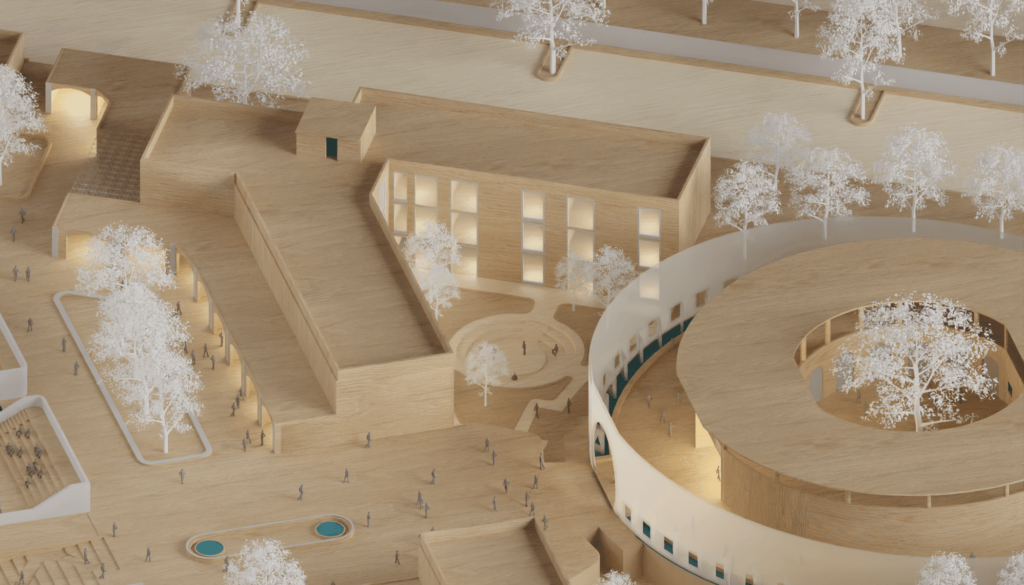
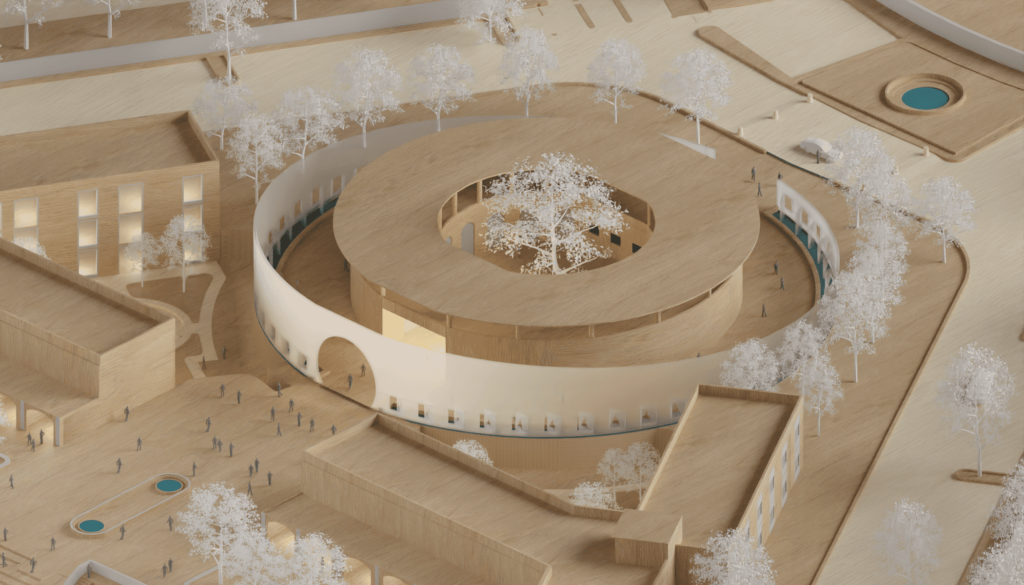
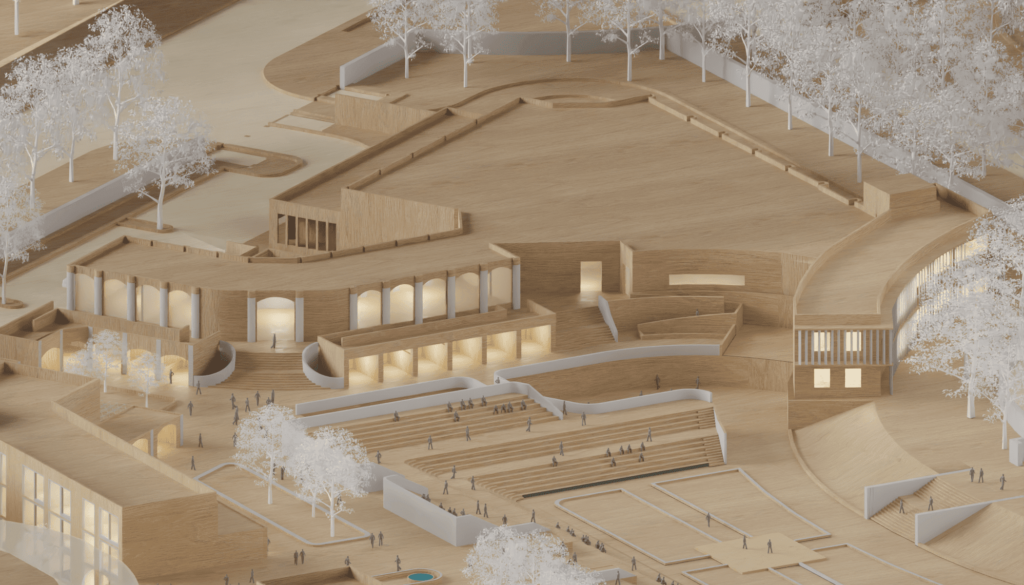
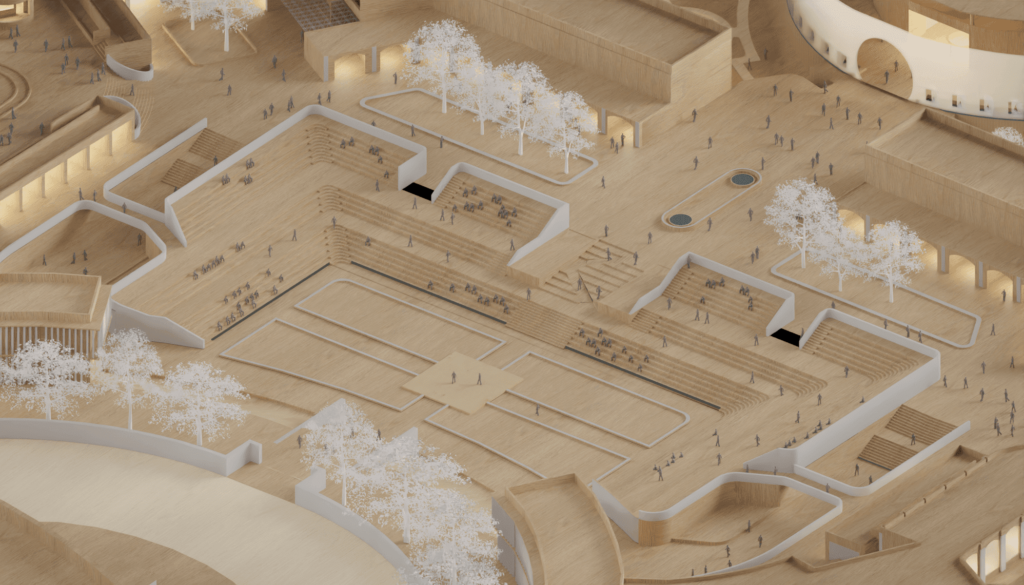
The form of the building is deeply inspired by the works of S.H. Raza, a renowned artist. His interpretation of Bindu and the 5 elements of existence truly mimic the spirit of democracy as envisioned by the freedom fighters. The building serves as a memoir of all those struggles and moments of participation in history.

Panels
